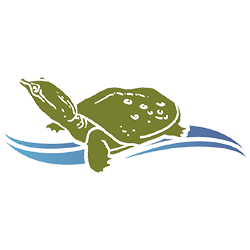October 25, 2020 (Updated 2/12/2023)
The purpose of the Chautauqua-Conewango Consortium, A Waterkeeper Alliance Affiliate is to serve as the voice of protection for our region’s water, both surface and ground, and all of the creatures who depend on it. That protection is based on everyone’s right to clean water for drinking, fishing and swimming. The Consortium’s jurisdiction is the entire Conewango Creek Watershed. This statement is being published because our statement of beliefs indicates that short-term water management techniques, including pesticide use, must not endanger the ecology of the watershed. Since the recent, widespread use of pesticides on Chautauqua Lake has caused harm to its native and long-established species, this statement is required for their protection. Further, the Consortium is required by the Waterkeeper Alliance to have an active role in patrolling the Conewango Creek Watershed. Thus, the Consortium must be actively involved in the planning and implementation of a monitoring protocol should it be deemed necessary to apply pesticides within the watershed. These statements are to be applied in order, with items 4-7 applying only after the criteria in item 3 has been met.
*Note that chemicals identified to kill plants are commonly called “herbicides”. The New York State Department of Environmental Conservation regulations instead use the term “pesticide” which is defined by the EPA to be “any substance or mixture of substances intended for preventing, destroying, repelling, or mitigating any pest”. Thus, throughout this document the term pesticide is used.
- The management and control of nuisance aquatic plants is appropriate when it is done within the context of a comprehensive watershed management plan that emphasizes the importance of the role of plant biodiversity to the overall biodiversity of the ecosystem.
- Preference must be given to non-chemical plant management and control options which prevent or mitigate nuisance aquatic plant growth. Some of these methods include:
- invasive species monitoring
- biocontrols
- mechanical and hand harvesting
- nutrient mitigation
- stormwater management
- Control of submersed aquatic vegetation by the use of pesticides must be restricted to the outbreak of new, non-native species. Long-established, Eurasian watermilfoil and Curly-leaf pondweed are identified as Tier 4 invasives by the Western New York Partnership for Regional Invasive Species Management which means, “Eradication from PRISM not feasible, focus on localized management over time to contain, exclude or suppress to protect high priority resources like rare species or recreation assets. Be strategic when deciding if/where to control.” Further stated by New York State Department of Environmental Conservation, “Eradication of an invasive aquatic species is particularly important at the initial stages of infestation, before the species has become well-established and widely distributed throughout the waterbody.”
- Protection of native and long-established aquatic species requires spot pesticide use only, with no widespread application necessary in the Conewango Creek Watershed.
- Protection of native and long-established aquatic species requires the mitigation of dispersion of pesticides accounting for ambient currents, both natural and wind-driven, to keep pesticides within the permitted areas.
- All submerged aquatic vegetation in water depths 6 feet or greater must be protected from pesticide application, including in navigation channels.
- In order to protect fish rearing and spawning areas, no pesticide application should occur before June 24.
This statement is supported and endorsed by the following:
Waterkeeper Alliance
Conewango Creek Watershed Association
Chautauqua Fishing Alliance
Mike Sperry, NYS DEC Licensed Guide, Owner, CRO Tackle, LLC
Chautauqua Watershed Conservancy
Bear Lake Association
Buffalo Niagara Waterkeeper
Audubon Community Nature Center
Chautauqua Lake Association
Cassadaga Lakes Association
Muskies, Inc. Chapter 69
